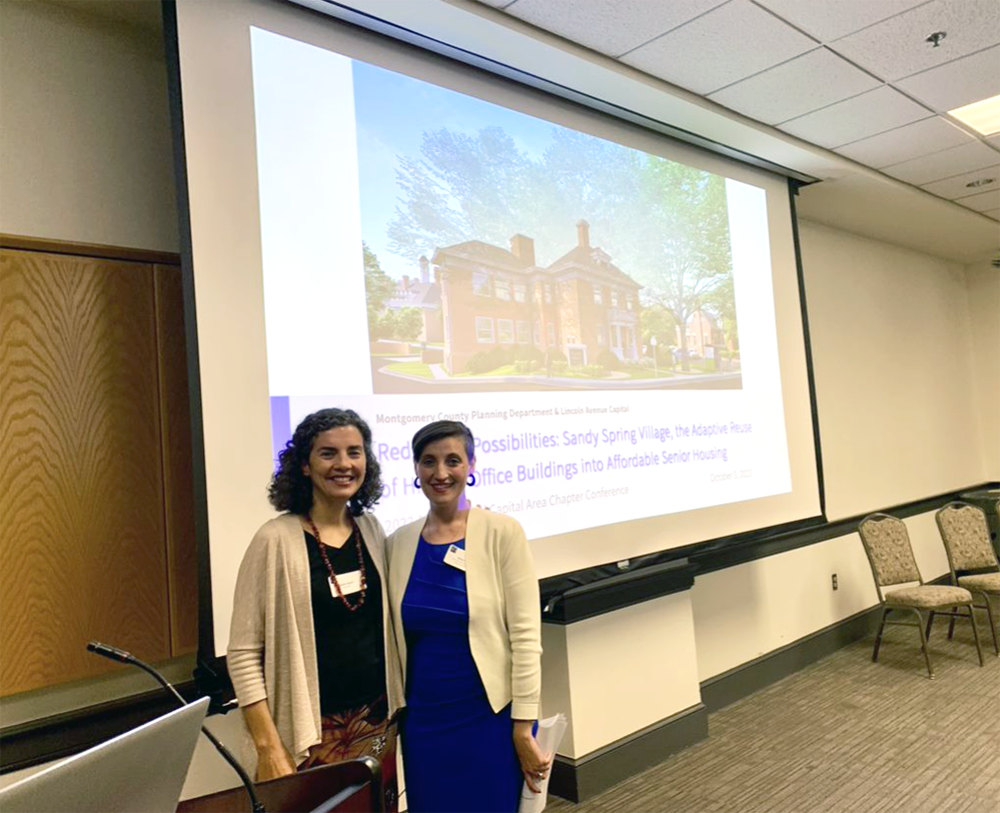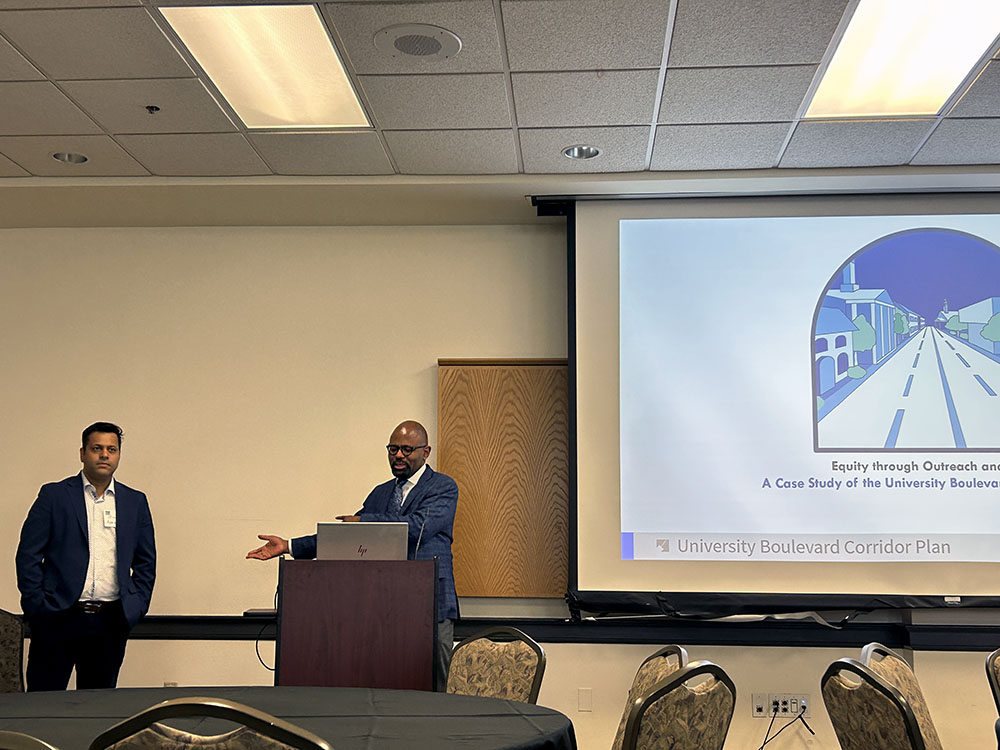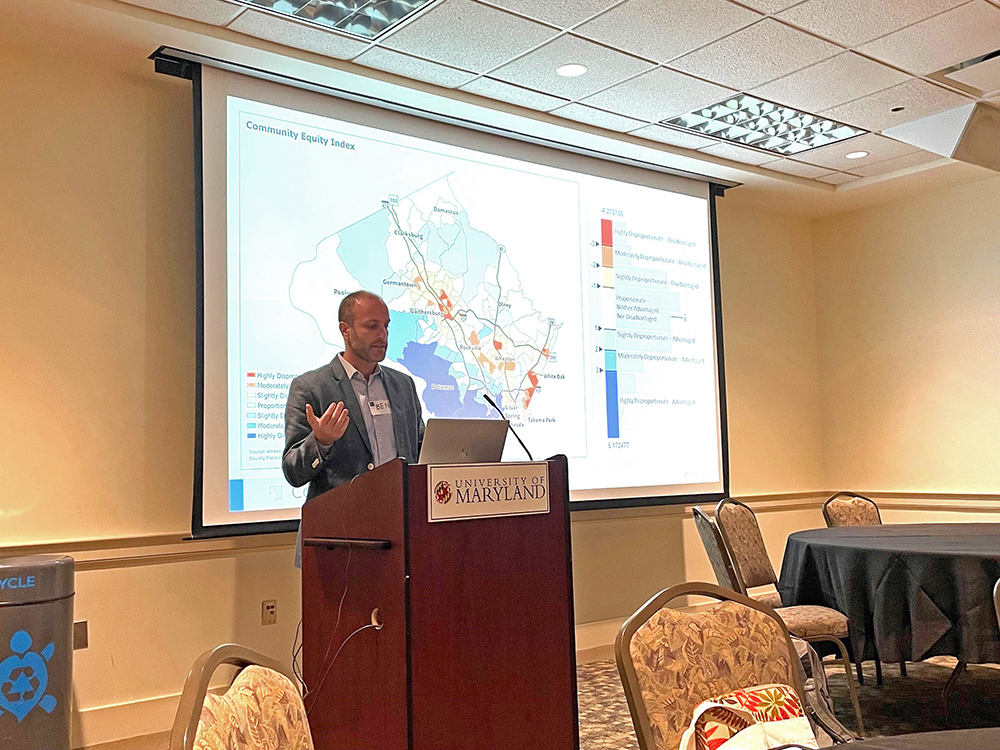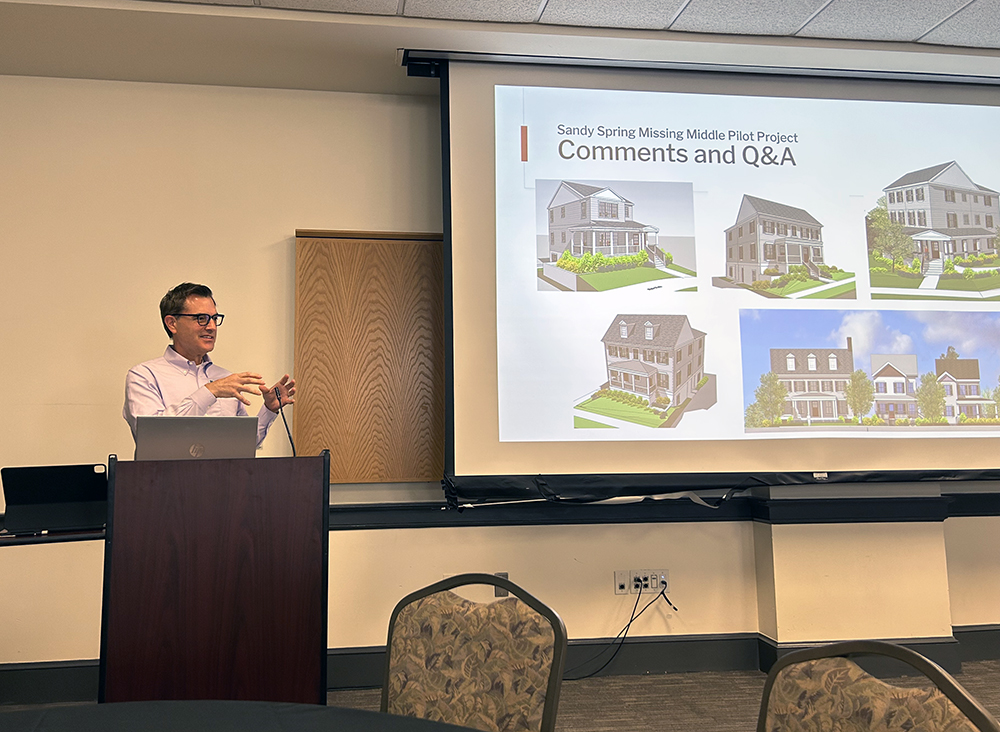By George Lettis
In October 2023, Montgomery Planning showed why we continue to be a thought leader in the Washington, DC region and the nation for our independent, innovative, and inclusive community planning. The American Planning Association (APA) – the largest membership organization of professional planners and planning leaders and experts – consistently recognizes our expertise and work products that exemplify the best in planning principles, creativity, and effectiveness and solidify Montgomery County’s status as Maryland’s economic engine and a national model for enhancing quality of life for current and future generations.
Two cases in point: Montgomery Planning won a prestigious national Award of Excellence from APA’s County Planning Division and the National Association of County Planners (NACP) and was honored to have nine staff members lead six presentations at the APA’s National Capital Association Chapter’s annual conference on October 5.
‘Beyond Talk and into Action’

Interstate 270 in Montgomery County, MD
Montgomery Planning’s Corridor Forward: The I-270 Transit Plan was the only recipient of the APA County Planning Division’s County Planning Project Award in the Small Area Planning category. The Corridor Forward Plan conducted detailed analysis to deliver near-term and long-term transit recommendations focused on improving access to transit options as well as advancing the county’s equity, environmental, and economic development goals along the I-270 corridor.
The APA and the National Association of County Planners were impressed with how the data-driven plan was developed with forward-thinking technical expertise and a focus on equity to build consensus with the community on what could be possible for providing needed transit to connect the communities along an important corridor. They also remarked how the plan advances transit beyond talk and into action by developing a lasting, achievable transit vision for the I-270 corridor with a scenario-building approach that helps decision-makers understand the different purposes, benefits, constraints, and costs of various transit options, as well as how components of different options can fit together to create a complementary transit network.
Read more in our press release about the award.
Showing Our Work
Montgomery Planning had outstanding representation at the APA’s National Capital Area Chapter Conference at the University of Maryland on October 5. Nine staff members were chosen by industry peers to be part of six conference sessions – a great opportunity to share our innovative work products and showcase our thought leadership in the DC region and beyond.
The Mapping Segregation Project
The department’s Historic Preservation Office Supervisor Rebeccah Ballo led a session on the first phase of its Mapping Segregation Project, part of our continued commitment to learn from discriminatory planning practices decades ago and advance the county’s commitment to racial equity in planning. The project’s team developed a mapping tool that shows historical patterns of segregation in Montgomery County when then-legal restrictive covenants prevented Black, Jewish, and Asian-American people from living in certain parts of the county during the 20th century.
Adaptive Reuse of Historic Buildings
Ballo also participated in a session with one of the department’s regulatory supervisors, Sandra Pereira, on the adaptive reuse of historic office buildings into affordable senior housing. A focal point of the presentation was the Sandy Spring Village project, which is an adaptive reuse of two underutilized office buildings in the heart of the Sandy Spring Historic District that will provide 56 senior affordable units within walking distance to retail, amenities, parkland, and public transportation.

Montgomery Planning staff members Sandra Pereira (left) and Rebeccah Ballo led a conference session on adaptive reuses of historic buildings.
Equity Through Outreach
Montgomery Planning planners Zubin Adrianvala and Nkosi Yearwood led a session on their innovative organization and analysis of the comments and feedback they’ve received from the public for their ongoing work on the University Boulevard Corridor Plan. The session explored how their analysis more accurately captures the essence of what the community is saying about their neighborhoods and how the analysis’ methodological rigor ensures a more equitable planning process and limits planner bias.

Montgomery Planning planners Zubin Adrianvala and Nkosi Yearwood present their equitable community engagement work for the University Boulevard Corridor Plan at the conference.
A New Approach to Measuring Jurisdictional Equity
Montgomery Planning’s data crunchers (the Research & Strategic Projects Division) and our geographic information systems (GIS) team developed the Community Equity Index (CEI) and its accompanying online, interactive CEI Explorer. Planner Ben Kraft, Principal GIS Specialist Jay Mukherjee, and Senior GIS Specialist Colin McNamara shared their work on what is a composite measure of equity-related indicators developed to help analyze existing conditions using U.S. Census tracts/neighborhoods, and to explore factors that may contribute to racial and social inequities in Montgomery County. Check out a recent Third Place blog for more information about the CEI.

Montgomery Planning’s Ben Kraft presents the department’s Community Equity Index project at the conference.
Missing Middle Housing
Missing Middle Housing has proven popular in some areas of the country for its flexibility and utility in addressing a jurisdiction’s housing shortages and challenges, particularly related to affordable housing. Montgomery Planning’s Senior Urban Designer Paul Mortensen joined a panel with senior private sector housing professionals and public sector leaders in the region exploring some of the components of this housing concept that are often missing in the public discourse. And Planner Phillip Estes led a separate session on Missing Middle Housing and the challenges and opportunities of providing affordable housing in established, suburban communities.

Montgomery Planning Planner Philip Estes leads a presentation on the Sandy Spring Missing MIddle Pilot Project.

About the author
George Lettis is Montgomery Planning’s Content Manager in the Communications Division. He has been with the department since January 2023 following his time as a public information officer at the Prince George’s County Health Department and a long career as a journalist. He earned his bachelor’s degree in journalism from the University of Maryland, College Park.